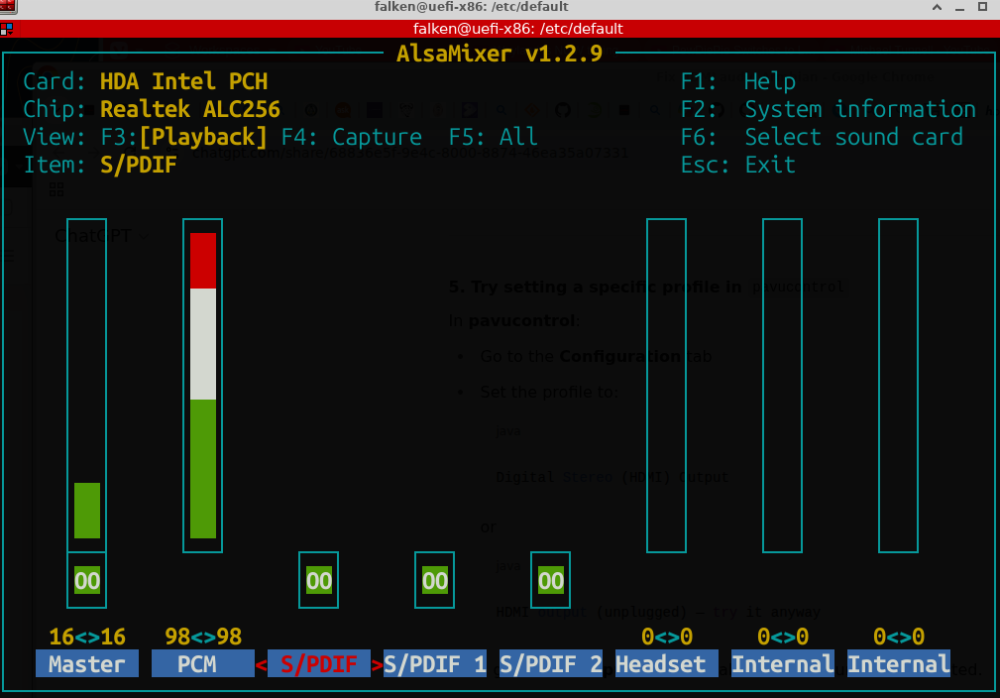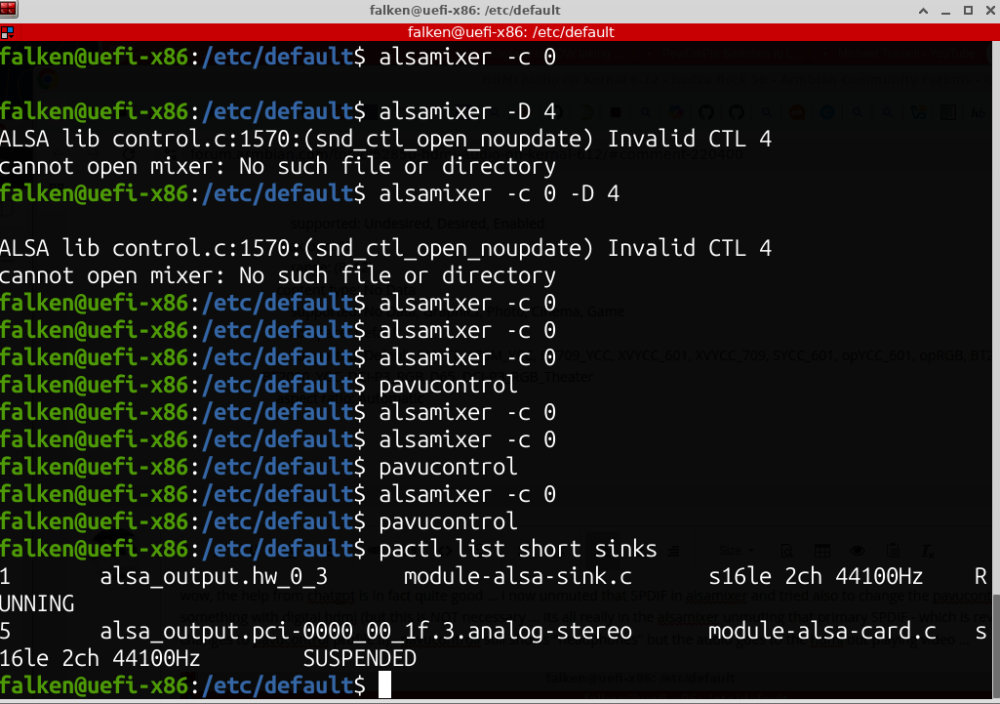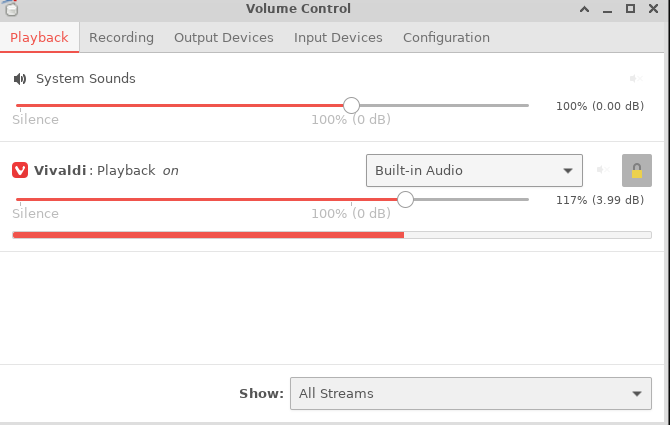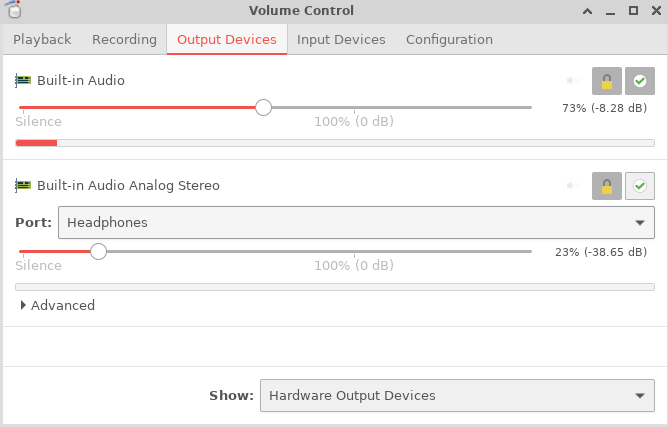Active threads
Showing topics posted in for the last 365 days.
- Past hour
-
Thanks!, it works nicely, i was using a minimal image and had to install xfce then edit the media-buster-legacy-rk3328 deb to not ask for armbian-buster-desktop, i also needed mpv-legacy and got it from here so far everything is working good, 4K hevc in kodi is fine but for some reason chromium in chrome://gpu says that video decoding isnt accelerated, only webgl stuff
-
Doing a little digging, From https://patchwork.ozlabs.org/project/uboot/patch/20210822044649.13585-3-samuel@sholland.org/ "Most Allwinner sunxi SoCs have separate boot ROMs in non-secure and secure mode. The "non-secure" or "normal" boot ROM (NBROM) uses the existing sunxi_egon image type. The secure boot ROM (SBROM) uses a completely different image type, known as TOC0." I am not an expert, but I feel that is likely the issue here. Since the X96 s400 will launch the bootrom, it should only require a bootrom change. from https://linux-sunxi.org/TOC0#U-Boot.27s_mkimage It should only need a RSA key generated, as the X96 S400 will launch the sboot, thus no Vendor e-fuse should be set.
- Today
-
hi all, pls, is possible to use armbian ueafi-x86 as host for virtualbox? I expect the ubuntu version?? how to install this from cli? recently it seems something was broken on my win11 (after reinstall of new bag of things) or with virtualbox 7.1xx; these were things that worked for years, even with hyper-v on (wsl2), but now, I am writing from armbian, testing old intel nuc10 system booted from sdcard/usb3 (preparing to test new amd machine too) ... virtualbox is quite crucial for some my yold dev things which I can run only in Win2K or Win7; btw, ms copilot was recently quite nice and understanding very tired guy ... https://copilot.microsoft.com/shares/7NhhL6e4MYhkvJC8Grmih Petr
-
hi, not sure for the sbc, but on uefi-x86, alsa has hdmi audio, but its not loaded for pulseaudio ... ?? here I managed to load it and unmute SPDIF in alsamixer (I still dont understand how devicetree powered SBCs differ against uefi-x86 system ... excuse me) crucial help from Lyra 🙂 ... unmuting SPDIF did the thing, probably also loading the sink also, ufff https://chatgpt.com/share/68836e5f-9e4c-8000-8874-46ea35a07331
-
wow, the help from chatgpt is in fact quite good ... I now unmuted that SPDIF in alsamixer and tried also to change the pavucontrol configuration profile for something with digital hdmi (but this is NOT necessary ... its all really in the alsamixer unmuting that primary SPDIF - which is reverted to MM with some changes to pavucontrol profile !!) - pavucontroll still shows "headphones" but the audio goes to the hdmi out playing video ... that manual adding of sink to pa probably helped - internal PCI audio shows as "built in audio analog stereo" and the hdmi tv output shows in pa as "builtin audio" ... uff, that audio channels naming ... excuse me, I am linux newbie in this area completelly, may be it was obvious for some, ... quite mess for me but okay, loading module, unmuting spdif ... will see Petr
-
Those were the days I remember compiling Linux 0.9 something .... it took a day and often nothing worked LOL. In embedded Linux, compiling kernel is nothing unusual, which is the reason why our build framework is focused into making this job easier. For tacking this parameter, you don't need to recompile everything. DTB can be recompiled on a device following by reboot https://www.google.com/search?q=recompile+device+tree+blob Device tree is just a hardware configuration that is provided to the kernel when it boots. This was the only possible related quick, cheap and easy way that I could come up with. Changing the value should have some effect - like (sometimes/always) not detecting PCI when going with weird numbers. More serious debug require a lot more time carefully checking code changes on areas that might have impact alongside with https://www.google.com/search?q=how+to+debug+pci+bus+on+signal+level Which is of course not cheap nor simple.
-
Whatever help you can provide know that it is truly appreciated! I will follow your suggestion and try a different kernel and report back my findings, thank you!
-
I just tested shutting down hostapd and restarting, it works systemctl stop hostapd.service systemctl start hostapd.service system process like hostapd should normally be properly started up and shutdown using systemd, killing the process etc may leave the kernel in inconsistent state. And maybe that's why you observe the issue. this is how I set it up https://gist.github.com/ag88/de02933ba65500376d1ff48e504b1bf3 accordingly, hostapd may require the interface to be on a bridge, I'm not sure about this, but that I'm using a (software) bridge so that the wifi interface is on it. > uname -a Linux orangepizero3a3 6.12.35-current-sunxi64 #1 SMP Fri Jun 27 10:11:46 UTC 2025 aarch64 GNU/Linux > nmcli c NAME UUID TYPE DEVICE bridge a6aa1bb8-c47e-400e-8de1-7faf96489c7a bridge br0 lo 084c74b2-0638-48be-b4c9-364f854ecabd loopback lo br-eth 6bab09b0-e16c-438b-a1bf-e0d82ca5141b ethernet end0 > sudo bridge link 2: end0: <BROADCAST,MULTICAST,UP,LOWER_UP> mtu 1500 master br0 state forwarding priority 32 cost 100 3: wlan0: <BROADCAST,MULTICAST,UP,LOWER_UP> mtu 1500 master br0 state forwarding priority 32 cost 100 I put both ethernet and wifi on the bridge, wifi is not managed by network manager, hostapd patch that into the bridge. it is possible to just let hostapd setup the bridge in hostapd.conf, and normally that's all needed. this isn't the earliest armbian I'm running hostapd in, i've done it since linux 6.6.x kernel an earlier release some 1 year back or so, no issues.
-

Home Assistant with full Armbian desktop experience?
eselarm replied to Robert Pace's topic in Orange Pi 5 Plus
Maybe some further notes on w.r.t. running HAOS in a VM: As indicated, the process is described for Intel, see https://www.home-assistant.io/installation/alternative For ARM, people have selected RaspberryPi and then ask why it does not work. That is because RPi uses proprietary bootloader (not U-Boot, nor EFI). You need the haos_generic-aarch64 build/image, see https://github.com/home-assistant/operating-system/releases I do not use qcow2, but just a flat img. That is easy to mount as loop device in case some changes are needed to partitions or so. I extracted the .img.xz file and changed the storage (VirtIO Disk) of my existing HA VM to use the new native HAOS instead of my old Debian+supervised_HA. It started without issues and I get to the webpage from where the rest is a standard 'HA getting started', e.g. restore its backup so all devices stats etc are back again. I know many people ask for VMware or Proxmox (or some for VirtualBox), but Linux has anyway all the low-level stuff build-in and a GUI as well: root@rock5b:~# apt install virt-manager virt-manager is already the newest version (1:5.0.0-5). I have this running on ARM64 since Debian Buster 64-bit beta RPi (and 1st early 64-bit Ubuntu server image for RPi4 and also Opensuse Tumbleweed 64-bit) so the commercial ones I dropped long time ago. Above is latest Trixie. Kernel is Armbian vendor currently, but that is only because I want video HW accel (ffmpeg codecs) to work. Otherwise Armbian edge or current offers better stability IMO. Simple tests show that DRAM speed for RK3588 is same or better as for old Intel Core I7, so with also up to 32GB, is great KVM server and desktop same as that old Intel boxes, but 4 Watt idle instead of 40 Watt or so. 40W means about 40 * 9000 is 360 kWh per year, that is 108 Euros per year for my energy contract (30 cents per kWh). -
Welcome / Witaj! Plenty of options for quick and easy start: https://docs.armbian.com/User-Guide_Armbian-Software/ Those small things can do big things
- Yesterday
-

Very simple module for nothing, Segmentation fault
Ryzer replied to Kopia's topic in Allwinner sunxi
Testing under 6.15-sunxi and unable to load the module at all. ryan@pcduino3:~/exp-drivers/hello$ sudo insmod hello.ko insmod: ERROR: could not insert module hello.ko: Invalid module format ryan@pcduino3:~/exp-drivers/hello$ sudo dmesg | tail -n 1 [ 2002.550246] module hello: .gnu.linkonce.this_module section size must match the kernel's built struct module size at run time ryan@pcduino3:~/exp-drivers/hello$ I am now wonder Is this tied to a configuration issue? Or is it something more deeper routed? One other thing I will try is bumping up GCC as AI suggest it could be a mismatch issue as the Build system uses GCC 13 but Debian comes with GCC 12. I will also try building with an Ubuntu distro as well. -

Image for MXQ PRO 4K 5G (Q44_V4.1_20210120 - Allwinner H3)
Ryzer replied to Wel7on's topic in Allwinner CPU Boxes
Hi wel7on, I see based on the image provided that you have an unpopulated serial console port (RX, TX and GND labels). If you are up for it I would recommend soldering a header to it and if you dont already buy a usb to serial converter. Makes it easier to identify why the board may not appear to be booting. You can use a program such as putty to recieve the serial debug output. Best of luck Ryzer -
You are most likely fine. But out of curiosity can you run the following: apt list --installed | grep armbian
-

Fuel Management App Idea for Armbian – Need Feedback!
robertoj replied to Danuta's topic in Software, Applications, Userspace
Sensor integration: buy a OBD2 to USB adapter and study the OBD2 codes to read the fuel liters/hour, km and km/h. It is very possible there is a python OBD2 library. The SBC should be running continuously in the vehicle, since the car electronic control unit does not have the memory to store the information for you. Python+tkinter/pyqt6+matplotlib is very effective for this kind of apps. -

boot from nvme, install via armbian-install ?
H_Berger replied to H_Berger's topic in Orange Pi 5 Plus
yaeh, thanks very much .... i just flashed the armbian image to the sdcard copied the base img also on the sd card booted into than dd'ed the copied img to the /dev/mmcblk0 checked the partitions rebooted with removed sdcard and it works !!! -
https://docs.armbian.com/Process_CI/
-
this is posted to Gist: https://gist.github.com/ag88/65db5434158683e43d1cc77c337ebdb5 Introduction Rpi-monitor https://github.com/XavierBerger/RPi-Monitor is a very nice app for monitoring sbc (single board computers/ actually bigger computers as well) like RPi on a web. it gives you a quick look at various system metrics cpu load, uptime, temperatures etc and more on a nice web page. and on top, makes nice time series graphs for the same, practically a dashboard. Installing in Armbian 25.8 for Orange Pi Zero 3 Rpi-monitor is normally not found in the common Apt repositories and actually the binary is a little old. I tried installing it based on the 'formal' docs but hit some invalid public keys errors, possibly expired certs. https://xavierberger.github.io/RPi-Monitor-docs/11_installation.html so here is a 'workaround' Deb packages for rpi-monitor you can find the packages in this repository (note that this may not be permanant and may change) https://github.com/XavierBerger/RPi-Monitor-deb use the **rpimonitor_latest.deb** file https://github.com/XavierBerger/RPi-Monitor-deb/tree/develop/packages install rpimonitor_latest.deb in Armbian use apt to install *rpimonitor_latest.deb* as it has varous package dependencies. e.g. download it to a folder and from there run sudo apt install ./rpimonitor_latest.deb the prior step should install rpimonitor, and check that the service is running by going to http://your_sbc_ip_address:8888 checking the setup rpi-monitor is runa as a systemd (unit) service if it is not running you can try systemctl status rpimonitor.service or journalctl -u rpimonitor.service to check what went wrong. to start / stop rpi-monitor it is as per basic systemd services e.g. systemctl start rpimonitor.service temperature 'not displaying' apparently, it is affected by this issue: https://github.com/XavierBerger/RPi-Monitor/issues/374 accordingly the fix/'workaround' is edit /etc/rpimonitor/template/temperature.conf replace #dynamic.1.postprocess=sprintf("%.2f", $1/1000) dynamic.1.postprocess=$1/1000
-
I have tested this on a NanoPi R5C as well as on NanoPC-T6 (non-LTS). For the later I also tested a vender provided Kernel / OS Installation. What happens is that whenever some Power-Saving is requested, the board will seemingly fully power down and is not responsive to anything, at best the reset button will do its work, R5C requires a power-cycle. The last kernel msgs are these (see https://www.kernel.org/doc/Documentation/power/states.txt😞 # echo freeze > /sys/power/state [ 54.373374] PM: suspend entry (s2idle) [ 54.671033] Filesystems sync: 0.297 seconds [ 54.775176] Freezing user space processes [ 54.780065] Freezing user space processes completed (elapsed 0.004 seconds) [ 54.780769] OOM killer disabled. [ 54.781078] Freezing remaining freezable tasks [ 54.782928] Freezing remaining freezable tasks completed (elapsed 0.001 seconds) [ 54.791332] r8169 0002:01:00.0 wan1: Link is Down I am at a loss how to diagnose this further. To me it appears that there is some vital power-source to CPU or RAM switched off.
-
Hi every one, Do we have a fix for bluetooth?
-

Installing Updated Armbian to S805 (TVPad 4) to eMMC
fss-hacks replied to fss-hacks's topic in Amlogic CPU Boxes
Is it just modifying the dtb? I was reading and I understand that means decompiling to dts and then recompiling but what edits would I have to do to enable eMMC? -

Composite TV OUT WORKING in Orange Pi One H3, 6.12 current
SteeMan replied to Error1429's topic in Orange Pi One
@Error1429 If you were to submit a well thought out PR along with the necessary doc and website updates, I'm sure this would be accepted and incorporated. But I think the feedback thus far as that this isn't something of high enough priority to ever being incorporated with Armbian's very limited resources.











